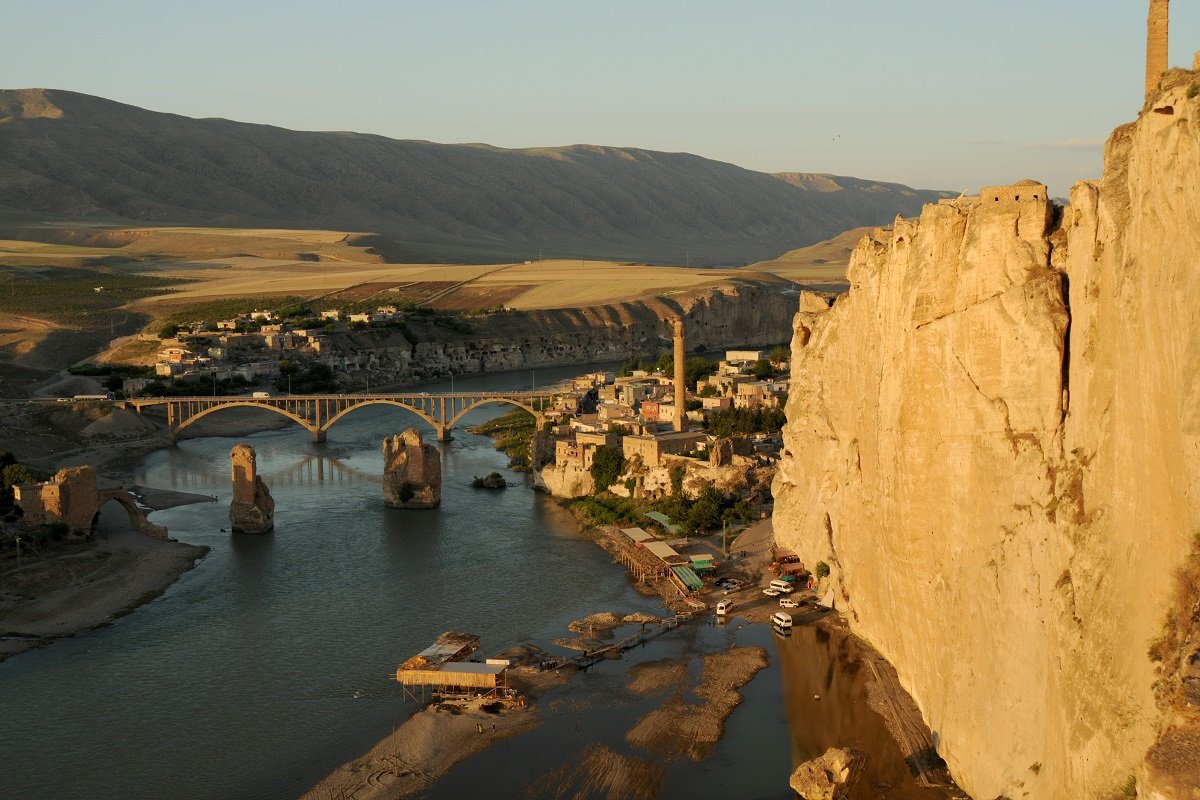
“Initiative to Keep Hasankeyf Alive” and “Hasankeyf Matters” have stated that Turkish government’s destruction of historic city of Hasankeyf and the environment of Tigris basin have been accelerated and some 200 caves were filled so far
According to a written statement released by the initiatives, a new road which has been built across the Tigris River to haul equipment and rubble to and from the work site, significantly altering the course of the river and severely reducing its water quality. “The serious risks to both the historic heritage of Hasankeyf and the natural ecosystem of the Upper Tigris Basin posed by this work, which is being carried out without proper transparency or public involvement, are being documented,” said the Initiative to Keep Hasankeyf Alive (Hasankeyf’i Yaşatma Girişimi) and Hasankeyf Matters.
“The work to reinforce the cliffs is causing irreparable damage to the historical and cultural fabric of Hasankeyf, significantly reducing the value of the citadel and the surrounding natural rock formations as cultural heritage,” said the statement reported by pro-Kurdish Fırat news agency.

“News articles and press releases on the website of the State Hydraulic Works (DSİ), which is responsible for the Ilısu Dam Project, state that following the collapsing of cliffs around the citadel – an area that includes the hills of Ra’s Tibbah and Darphane – portions of the cliffs and surrounding valleys would be filled in with 4,75 cubic meters of debris/rubble and concrete. However, no plan for this has been shared with the public,” said the statement.
The failure to inform and consult the public regularly on substantive details of the citadel reinforcement project contravenes the laws of the Republic of Turkey, specifically Law Number 3534, which brought the country into legal compliance with the Council of Europe’s Convention for the Preservation of the Architectural Heritage of Europé (CETS 121). Article 14, Paragraph 1 of that law states that each party to the Convention will undertake “to establish in the various stages of the decision-making process, appropriate machinery for the supply of information, consultation and co-operation between the State, the regional and local authorities, cultural institutions and associations, and the public”.
International law mandates that intangible cultural heritage must be protected and that the public must be substantively and systematically consulted regarding projects for the conservation of immovable cultural heritage. Contrary to these legal requirements, the on-going work in and around Hasankeyf – its goals, technical plans, detailed methods and time schedule – is shrouded in extreme secrecy.
Civilized life in the antique town of Hasankeyf dates back to 8th century B.C. and the drawings inside the caves scattered around the town shed light on different periods, cultures and architectures of humanity. It is home to evidences on the roots of human species, the beginning of agriculture, and the beginning of civilization. The nearly 6 thousand caves around the antique town are one of the first sites of human settlement.
With its history and nature, Hasankeyf fulfills 9 of the 10 UNESCO criteria to be protected as human heritage. Hasankeyf also possesses one of the richest treasures of Islamic monuments. Sitting on the banks of the River Tigris, the antique town is one of the most important architectural and archaeological sites of the world, boasting a rich biodiversity and 12,000 years of human history. Masterpieces of Islamic architecture, dating from the 12th to 15th centuries C.E., make the town one of the best preserved witnesses to Seljuk urban culture, particularly from the Artukid and Ayyubid dynasties.
A small town with a great heritage, Hasankeyf already attracts about 500,000 visitors each year, a number expected to rise. Given its historical, architectural and economic significance for the region, public opinion supports its preservation. The area was declared a First Degree Archaeological Site by Turkey’s Supreme Board of Monuments in 1978 and has been under the protection of the Culture Ministry’s General Directorate of Antiquities and Museums since 1981.
There are more than 300 archaeoSeljuklogical sites within a 7 thousand hectares of land where the town settled. 83 of these sites are directly affected by the dam, and the others are susceptible to the dam’s erosion affect.















